| . 1 . 2 . >> |
| Author |
Message |
ICC
Member
|
# Posted: 12 Oct 2018 09:28pm
Reply
I'm bored, waiting to see if the rain stops. Bored. I have a lousy 3G connection, but will see if I can upload a picture or two.
I've been thinning trees for several years. It seems like a never ending job. First picture is typical of what almost all the forested acres looked like. Second and third will be after pictures. Sorry, but I haven't got same location before and after shots.
The after thinning shots still have a lot of slash and fallen trees to be still cleaned up. Sometimes it is difficult to find folks who are willing to take free firewood if it is still in log form and a few miles off county roads.
Like I said, I hope the connection is good enough to get pictures loaded.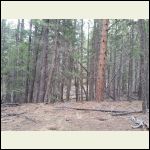
Untouched for years
| 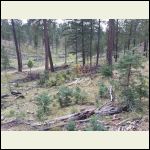
Thinned, needs cleanup
| 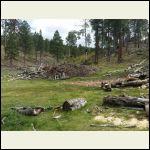
Thinned, last years slash
|  |
|
|
cspot
Member
|
# Posted: 12 Oct 2018 09:32pm
Reply
What is your reason for thinning the trees ICC? Just curious of what the end goal is?
|
|
toyota_mdt_tech
Member
|
# Posted: 12 Oct 2018 09:45pm - Edited by: toyota_mdt_tech
Reply
I have 40 acres and I am having the DNR in my state come in on a cost share program to help private timber farmers. They just finished a 100%, I am on a 75%/25% and I pay the 25%. They have a 50/50 cost share available all the time.
The cost to thin is about $1200 an acre. They will come in, cutters thin, I am having them leave all douglas fir and they wont cut anything over 8" diameter or anything I have marked with a blue ribbon. They leave a spacing of 15 feet between trees, remove all the branches on the remaining trees to the 10 foot mark. They chip up all the trees and branches they remove and blow it all around, not in piles. My cost will be about $6000. I have singed the contract, maybe start soon, if not able to this fall because of snow, start in April.
With my chipper, I should be able to maintain it. The seedlings are popping up all the time.
This makes the existing stand healther, resist beetle kill, much safer from fires.
I will take advantage of the next helping hand they offer for my other 20 acres. Since i have owned this land, this is the 3rd time they offered killer deals on landowner assistance.
I invested in my own chipper, the DR tow behind 16.0 and I added the extended chute. I did modify the frame to raise it and widen it. (not shown in pictures)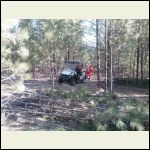
20180422_174153.jpg
| 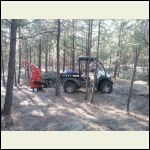
20180422_174221.jpg
| 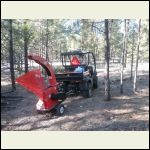
20180422_174241.jpg
| 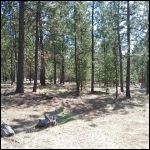
20180425_143004.jpg
|
|
|
ICC
Member
|
# Posted: 12 Oct 2018 10:16pm
Reply
Too many trees to the acre, as in picture one, is the main reason. Too many trees stresses them all. Not enough water for them all for one thing. Also with them crowded like that with all the small stuff it is a wildfire just waiting for ignition. The whole forest can virtually explode in flame if something causes ignition in dry times. Grasses hardly have a chance to grow. Deer and elk can hardly move through. Many shrub species won't grow as they don't get enough light. Basically it is an unnatural situation. There
The goal is to remove the dead and dieing trees, then thin the living to where we have an assortment of maturities. We want more space between trees. Clumps of several trees are okay but for the main, we want to make it difficult for crown fires to get going. Opened up we see more wildlife, from elk on down through turkey to rabbits. The number of trees per acre depends on the size of tree. We go by basal area, as measured at 4.5 feet above the ground. Basal area is the square feet total of all the trees in an acre. We are aiming for an average of about 50 sq ft per acre. Some of the overgrown areas may have 3 or 4 times as much basal area per acre.
We're trying to get the forest to look more like what it would be like if we had not spent the last 150 years or so extinguishing every little fire that started. Part of the difficulty is that there is almost no market for the timber. Cutting selectively raises the costs. There are no large mills nearby and the small ones mostly have enough timber closer to them. The state has a program to pay for part of the costs, but they have about as many rules as there are trees to thin.
|
|
ICC
Member
|
# Posted: 12 Oct 2018 10:20pm - Edited by: ICC
Reply
Looking good, toyota_mdt_tech. More landowners of forested lands should get on the bandwagon. I have made use of the state program in some blocks on my land.
Too many landowners don't believe you can have too many trees. I have a neighbor or two who are like that. They think they are so green and I am not.
|
|
Jebediah
Member
|
# Posted: 13 Oct 2018 08:12am - Edited by: Jebediah
Reply
Here in Nova Scotia there are several firewood companies that will come in and thin out trees, using small scale equipment as to not ruin the habitat as wood lots are becoming harder to find. There is an agreement drawn up of how much wood is to be removed to make it a viable process and the property owner gets a quote for a percentage of money and or firewood. I went to look at a property that they had already thinned out, I must say I was pretty impressed how it looked after they left...That property looks so much better/healthier, like someone going to the gym and losing 100 lbs.
|
|
fiftyfifty
Member
|
# Posted: 13 Oct 2018 09:13am
Reply
What part of the country is this in?
|
|
toyota_mdt_tech
Member
|
# Posted: 13 Oct 2018 09:25am
Reply
By the looks of ICC forest, he is also out west, the Ponderosa pines, fir and spruce is a giveaway. He has some elevation also. ICC, you at 3500-4500 feet area?
|
|
|
ICC
Member
|
# Posted: 13 Oct 2018 10:38am
Reply
Northern NM. The elevation varies from 7000 to 9000 feet. Lots of ponderosa pine, some white pine, limber pine, doug fir, spruces, aspen, scrub oak. Mostly ponderosa though.
|
|
cspot
Member
|
# Posted: 13 Oct 2018 12:35pm
Reply
Ok. I got you that alot of it is fire protection. We don't have much worries about that in the East here. 
|
|
toyota_mdt_tech
Member
|
# Posted: 13 Oct 2018 06:30pm
Reply
Quoting: cspot Ok. I got you that alot of it is fire protection. We don't have much worries about that in the East here.
C spot, this is only one of the good reasons, others is thinning will leave more space and allow more light and less competition for the water, the remaining trees will grow much quicker and be way healthier. A weak or stressed tree can not produce pitch and when a bark beetle can get under the bark, its over. He sends out a pheromone to attack and in no time, needles are all brown and top is wilting over and you can see the bark lifting off. Peel it off, you can see the work they did.
A healthy tree will eject them with pitch. So far, only some saplings have been taken by bark beetle in my area, but I'd say several thousand, no bog deal, they were densely packed in and needed thinning out anyway.
I did lose one larger tree, probably 70 feet tall. I dropped it finally and that is what I made my hitching post out of. After the thinning, fresh cut trees attract beetles, but the stand is healthy enough, they dont get under the bark.
|
|
ICC
Member
|
# Posted: 13 Oct 2018 06:53pm
Reply
Those who have never traveled the western states much may be surprised at the devastation the pine bark beetles have caused. There are entire mountainsides that are either rusty red with dead pines that have not yet dropped their needles, or gray with standing dead pines after the needles have fallen. Sad to see but the beetles have been around a long long time. The overcrowded forests coupled with drought make for an all too ready beetle feast.
|
|
ICC
Member
|
# Posted: 13 Oct 2018 07:03pm
Reply
toyota_mdt_tech, do you have much mistletoe infestation? We have dwarf mistletoe that harms pretty much all the evergreen species. It's another 'gift' that thrives from the years of wildfire suppression, drought and overcrowding.
|
|
toyota_mdt_tech
Member
|
# Posted: 13 Oct 2018 08:28pm
Reply
No missletoe at all. I have mostly Ponderosas, some douglar fir and there is lots of Tamarack (western larch) in the area, but I have none. I may have some on my back 20, havent scoured it as thoroughly. And the ground cover is pine grass, green in spring, yellow in summer and fall. Right now, the western bark beetle is all I have to deal with thankfully and its been limited to stressed tight sapling groups.
|
|
Mike 870
Member
|
# Posted: 13 Oct 2018 09:09pm
Reply
I'll be spending much of next weekend doing the same thing. There is no way I can do all of my property any time soon but I'm going to start near my cabin and work my way out. We're in the midwest, fire isn't much of a concern, but the Junipers crowd out rare prairie flowers that we have here in little pockets called Cedar Barrens. I'm trying to thing of something fun to do with the cedar trunks, was thinking maybe a pioneer style fort/fence or maybe a covered shooting platform. You can see in the picture I've got a bit of an issue...
|
|
toyota_mdt_tech
Member
|
# Posted: 13 Oct 2018 09:29pm - Edited by: toyota_mdt_tech
Reply
Quoting: Mike 870 'll be spending much of next weekend doing the same thing. There is no way I can do all of my property any time soon but I'm going to start near my cabin and work my way out
Mike, this is what I did, bought the big chipper, for me to do 40 acres is a monumental task. So I figured I'd start near and around the cabin for fires and then the grant money came by, does this every so many years. I will post pictures of my place when front 20 is done.
Mike, I also bought a Honda pole saw, actually the UMC435 power head, then the pruner tip and added the longer extension. I can easily trim branches to about the 12 foot mark standing on the ground. The saw came with a shoulder harness so I am not holding the saw with my arms, just steering it, weight is on shoulders.
|
|
Mike 870
Member
|
# Posted: 13 Oct 2018 10:28pm
Reply
That saw sounds nice, I've just been felling them and then limbing them on the ground. Now what I would really like is a little compact tractor to skid these things around, they just heavy enough for it to be a chore.
|
|
martym
Member
|
# Posted: 14 Oct 2018 10:38am
Reply
Has any one had success thinning in the Ozarks? If so do you have any links for best practises?
Locals tell me any thinning just makes room for the wild grapes and brambles to move in. I would much rather the over crowded saplings than that mess.
My searches have lead me to forest management for logging but that isn't my goal. I just want to clean up about 2 acres enough to be able to walk the area with out climbing over and around the under brush.
|
|
toyota_mdt_tech
Member
|
# Posted: 14 Oct 2018 01:39pm - Edited by: toyota_mdt_tech
Reply
Mike, I solved that issue, got a Kubota, but have not hauled it over to my property as of yet. Plan is to next spring to finish up my campsites. Gravel is already in large piles on hand. I use my pole saw to trim the trees lower limbs on trees I plan on keeping. This will reduce the chances of a crown fire.
Martym, around these evergreens, the soils become acidic and I think it reduces the growth you have in a deciduous type forest. But rule of thumb, bring in more light, more growth.
In my area, those areas clear cut will be reseeded and then in comes the scrub brush, grows pretty thick and tall, takes a while for the seedlings planted to overcome the brush because of low light, and when they finally do, they choke off sunlight and scrub brush dies back. But till then, you can hardly walk through it without a machete. More forest cutting are moving towards selective thinning now.
|
|
martym
Member
|
# Posted: 14 Oct 2018 02:08pm
Reply
Thanks for the response.
Yes I should have been more clear. Very differant from your high country pine forest.
Oak Hickory and Walnut are the dominant mature trees, In that order. It seems like Eastern red cedar is the dominant sapling. The land was bulldozed back in the 1970 clearing all but the largest trees. Then the owners gave up there cabin plans and the land has been sitting empty.
I was hoping for clues on finding the sweet spot on having a dense enough canopy to inhibit the grapes and brambles. While allowing for access.
|
|
Nate R
Member
|
# Posted: 14 Oct 2018 03:09pm - Edited by: Nate R
Reply
Quoting: martym clues on finding the sweet spot on having a dense enough canopy to inhibit the grapes and brambles. While allowing for access.
That might be a bit tough with multiple species. But looking up the stocking charts for each of your main species and figuring out your current total density might give you a good idea of what you have. Some discussion with a forester might help. Crown coverage, etc.
Stocking is measured in square feet of trunk area per acre (at breast height), and is balanced by the average tree diameter. Usually the stocking charts are set up for best growth, without too much sunlight letting other stuff underneath grow. But keeping your stand to the higher end would help, I'd think.
Example for Red Pine:

My 4 acre stand of 60 yr old red pine measured out around 310 trees per acre, 10.8" average diameter to begin with when I bought it. That comes out ABOVE the A line, around 200 SF/Acre. Likely getting overstocked at that point. (Too dense.)
So, the chart shows around that size you could thin down to ~90SF/acre without sacrificing TOO much. But I wanted to keep as much canopy as I could, and as many trees as I could, while still leaving room for a few decades of growth. So I had it thinned to ~ 130 SF an acre. They removed more smaller than large trees, so my average diameter after the thinning was up over 11 inches, and at about 175 trees/acre.
You could get an idea of total density several different ways, and see how that stacks up against the stockign charts for your species.
Some better info here:
http://woodlandstewardship.org/?page_id=1118
And a bit here:
http://oak.snr.missouri.edu/silviculture/tools/gingrich.html
You'll find that oaks are stocked MUCH differently than red pines!
|
|
martym
Member
|
# Posted: 14 Oct 2018 03:49pm
Reply
Thanks Nate,
I have some learnin and measurin to do.
Allways helps to have the right words to plug into google.
|
|
Nate R
Member
|
# Posted: 14 Oct 2018 04:37pm
Reply
No problem! After a discussion and site visit with a state forester, I realized I needed to learn more about my trees to be able to make smart decisions about management. I'm glad I took the time to do so, and take some sample measurements before and after my thinning. Been very educational.
|
|
ICC
Member
|
# Posted: 14 Oct 2018 05:59pm
Reply
Quoting: Nate R visit with a state forester
They are a great resource. Most of them are very friendly, knowledgeable folks. They know the local conditions and what to do about invasive species, etc.
That is the best advice I can give as what I know about the northern NM forests mostly is not applicable to an eastern deciduous forest.
|
|
Jebediah
Member
|
# Posted: 14 Oct 2018 06:09pm
Reply
Quoting: Nate R I realized I needed to learn more about my trees to be able to make smart decisions about management
If there are any Woodlot owners and Operators from Nova Scotia on this site that are not members I give seminars on forestry stewardship every fall. This year my executive director is organizing and teaching, there is only one weekend class left and two spaces, they fill up quick.
|
|
Nate R
Member
|
# Posted: 14 Oct 2018 06:52pm
Reply
Quoting: ICC Quoting: Nate R visit with a state forester They are a great resource. Most of them are very friendly, knowledgeable folks. They know the local conditions and what to do about invasive species, etc. That is the best advice I can give as what I know about the northern NM forests mostly is not applicable to an eastern deciduous forest.
I should note that I ended up working with a private forester for my thinning. There's a reasonable market for red pine in Wisconsin, and I had a good amount large enough to be sawtimber as well, so I made some money on the thinning. It doesn't always have to cost to help the forest!
|
|
toyota_mdt_tech
Member
|
# Posted: 14 Oct 2018 08:03pm
Reply
Quoting: Nate R No problem! After a discussion and site visit with a state forester, I realized I needed to learn more about my trees to be able to make smart decisions about management. I'm glad I took the time to do so, and take some sample measurements before and after my thinning. Been very educational.
Nate, for me to get my timber tax breaks on my 20 acres ($32 a year per 20 acre parcel) I have to have a forest management plan and I hired a professional forester, she drew up the plan for both parcels and I just renewed the first one and did a second on my new 20 acre parcel. They must be renewed every 10 years.
Also, the DNR associate is also a professional forester whom I spoke with directly when I was out there the last two times and he drew up my thinning plan, ie how much spacing between then, no trees cut over 8" as this is marketable timber and what trees to lean heavy towards and which ones to steer clear of.
One was Tamarack (AKA Western Larch) and those are no cuts (I have not seen a tamarack on my front 20, but there may be some), I also added in douglas fir, no cut there, regardless of size or location. He walked the boundary, marked it with pink ribbons and his GPS calculated the exact acreage.
And they are removing the debris by chipping it and in spring, I will have a much more open stand of timber with lots of space between them and lush green pine grass. I have seen the results from my neighbors who had it done already around me. Really nice.
|
|
Mike 870
Member
|
# Posted: 15 Oct 2018 08:08am
Reply
Congrats on the tractor Toyota!
|
|
toyota_mdt_tech
Member
|
# Posted: 23 May 2021 10:04pm - Edited by: toyota_mdt_tech
Reply
OK, old post brought back to life, I have, since the last post here, had my entire 40+ acres professionally thinned. Nothing over 8" was cut, I told them to leave all douglas fir standing (most valued timber in the area) and also tamarack (western larch) and I did have a single tamarack, the rest removed, those left, branches trimmed to the 10 foot mark, no logs hauled out, it was all chipped up. I have a before and after photo of the same spot. Notice the after photo, all brown and woodchips abound, but a month later, the grass was lush and green. I will post a picture of a campsite with a good shot of the lush green background grass. That grass turns golden yellow in August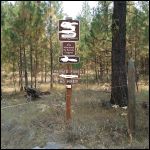
Front gate before thinning
| 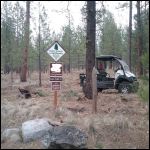
Front gate after thinning
| 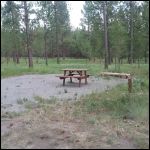
View of thinning and lush green grass
|  |
|
|
ICC
Member
|
# Posted: 23 May 2021 10:12pm
Reply

|
|
| . 1 . 2 . >> |

